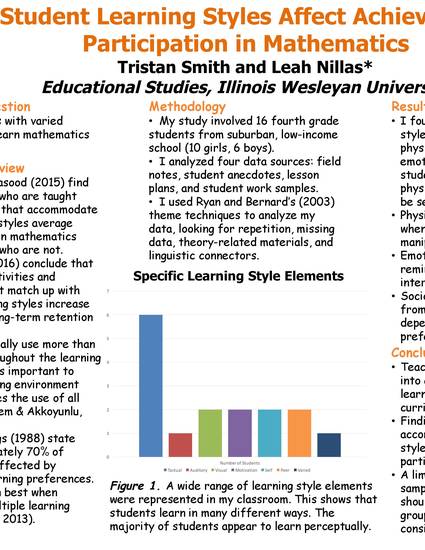
This study was conducted with the goal of finding an answer to how students with varied learning styles learn mathematics differently. Similar studies, such as one conducted by Mokmin and Masood (2015), found that students whose learning preferences were accommodated had higher average scores in mathematics compared to students whose learning preferences were not. In this study, I recorded observations about individual fourth grade students; how students responded to different activities to determine what learning styles were present in my classroom. Using these observations, I modified my classroom instruction and activities to better suit the learning needs of my students by adding in more activities with visual, auditory, and tactual elements. Through content analysis of field notes, student anecdotes, and students’ homework/test scores, I explained a relationship between the Dunn and Dunn (1993) model of learning styles and the way in which my individual students learned mathematics. This study is significant because it demonstrates a correlation between student learning styles and their participation and achievement in mathematics.
Available at: http://works.bepress.com/leah_nillas/203/
